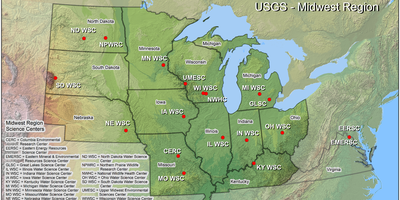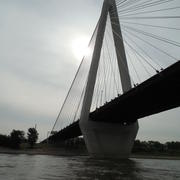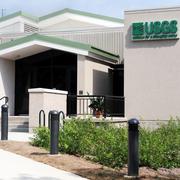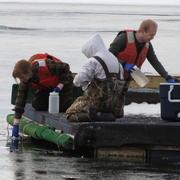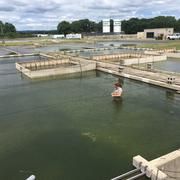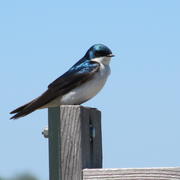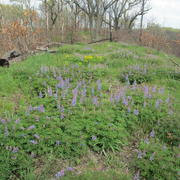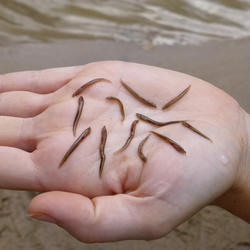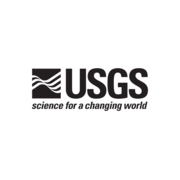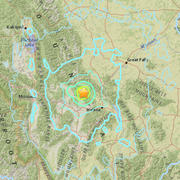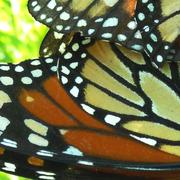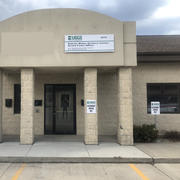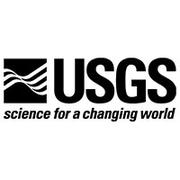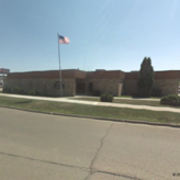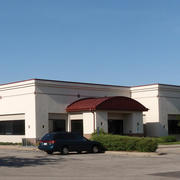Regions
Midwest
Regions L2 Landing Page Tabs
Welcome to the Midwest Region! Our region includes 19 Science Centers in 12 States from the Great Lakes to the Dakotas, south to Missouri and Kentucky. Our streamgage network is used to monitor and assess water resources across the region. Other research focuses on fisheries and aquatic ecosystems, midcontinental plant/animal species, invasive species, wildlife disease, and energy and mining.
Large River Science
Expertise in large river research provides science information to inform decisions on river management and restoration in the Midwest Region. Connectivity is a fundamental concept in river ecology and refers to opportunities for water to flow along and through riverine ecosystems. It is considered one of the primary drivers of river productivity, biological diversity and ecosystem health.
Mining and Energy
Scientists are examining a number of issues to characterize potential effects of unconventional oil and gas development in the Bakken Shale within the Williston Basin, located in ND, SD and MT. Research is building upon current/ongoing studies to implement new, innovative research including water quality, water availability, ecological effects, proppant sand, and induced seismicity.
Flood Response
Floods are the leading cause of natural disaster losses, and Midwest Region scientists are ready to respond. Flood inundation maps tied to USGS real-time stream gage data and National Weather Service flood forecast sites enable state and local communities to make timely operational and public safety decisions during floods.
Harmful Algal Blooms (HABs)
The USGS collaborates with local, state, federal, tribal, university, and industry partners to conduct the science necessary to understand the causes and effects of toxic HABs and inform water management and public health decisions. USGS is characterizing the life cycle of HABs, their asociated toxins, and the genes responsible for cyanotoxin production. This work is enhancing the ability of...
Nutrient Monitoring Activities
Nutrient pollution is one of America's most widespread, costly and challenging environmental problems. Reduction in nutrient inputs to the Great Lakes is a priority under both the Great lakes Restoration Initiative and the Great Lakes Water Quality Agreement. To support these efforts, USGS scientists across the Great Lakes region are monitoring the transport of nutrients at key locations.
Asian Carp Early Detection
Increased threat of Asian carp entering the Great Lakes and spreading to other basins such as the Upper Mississippi River and Ohio River basins, has led to increased prevention and control efforts since 2010. In collaboration with partners, USGS scientists are testing early detection methods and technologies to enhance the ability of agencies to manage Asian carp to minimize their influence...
Asian Carp Risk Assessment and Life History
Increased threat of Asian carp entering the Great Lakes and spreading to other basins such as the Upper Mississippi River and Ohio River basins, has led to increased prevention and control efforts since 2010. USGS Asian carp biology and life history research has led to the development of models, tools and strategies to better understand the risk of Asian carp establishment and survival....
Asian Carp Integrated Control and Containment
Increased threat of Asian carp entering the Great Lakes and spreading to other basins such as the Upper Mississippi River and Ohio River basins, has led to increased prevention and control efforts since 2010. Successful management of invasive species requires methods to contain future spread, reduce population levels, and minimize their effects. In collaboration with partners, USGS...
Areas of Concern (AOC)
Under GLRI Action Plan II, federal agencies and their partners will continue to remediate and restore Areas of Concern. Federal agencies will implement critical management actions in all of the remaining AOCs and will complete all management actions required to delist the following ten: Buffalo River, Clinton River, Grand Calumet River, Manistique River, Menominee River, Muskegon Lake, River...
Aquatic Native Species and Habitat Restoration
During the first five years of the Great Lakes Restoration Initiative, federal agencies and their partners worked to maintain, restore and enhance populations of native fish and wildlife species. The following actions were taken to conserve native species that were once broadly distributed across the lakes: Assisting with the delisting of the federally endangered Lake Erie water snake;...
Toxic Substances
The USGS, federal agencies, and their partners will continue to further evaluate emerging contaminants that have the greatest potential to adversely impact Great Lakes fish and wildlife – impacts which may also result in ecological, economic and recreational consequences. Federal agencies will assess the extent to which identified risks may impede environmental quality and resource management...
Terrestrial Native Species and Habitat Restoration
During the first five years of the Great Lakes Restoration Initiative, federal agencies and their partners worked to maintain, restore and enhance populations of native species. The following actions were taken to improve conditions for the endangered and threatened species: bog turtle, Canada lynx, copperbelly water snake, Eastern Massasauga rattlesnake, Hines emerald dragonfly, Karner blue...
South Dakota Surface Water Data

Real-time, daily, peak-flow, field measurements, and statistics of current and historical data that describe stream levels, streamflow (discharge), reservoir and lake levels, surface-water quality, and rainfall in Wisconsin. Surface-water data are collected and stored as either discrete field-water-level measurements or as continuous time-series data from automated recorders.
South Dakota Water Quality Data

At selected surface-water and groundwater sites, the USGS maintains instruments that continuously record physical and chemical characteristics of the water including pH, specific conductance, temperature, dissolved oxygen, and percent dissolved-oxygen saturation. Supporting data such as air temperature and barometric pressure are also available at some sites.
South Dakota Ground Water Data

Data from wells, springs, test holes, tunnels, drains, and excavations in South Dakota; well location data includes information such as latitude and longitude, well depth, and aquifer. Groundwater level data are collected and stored as either discrete field-water-level measurements or as continuous time-series data from automated recorders.
North Dakota Water Quality Data

At selected surface-water and groundwater sites, the USGS maintains instruments that continuously record physical and chemical characteristics of the water including pH, specific conductance, temperature, dissolved oxygen, and percent dissolved-oxygen saturation. Supporting data such as air temperature and barometric pressure are also available at some sites.
North Dakota Surface Water Data
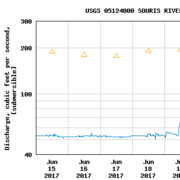
Real-time, daily, peak-flow, field measurements, and statistics of current and historical data that describe stream levels, streamflow (discharge), reservoir and lake levels, surface-water quality, and rainfall in Wisconsin. Surface-water data are collected and stored as either discrete field-water-level measurements or as continuous time-series data from automated recorders.
North Dakota Ground Water Data

Data from wells, springs, test holes, tunnels, drains, and excavations in North Dakota; well location data includes information such as latitude and longitude, well depth, and aquifer. Groundwater level data are collected and stored as either discrete field-water-level measurements or as continuous time-series data from automated recorders.
Elevation Data
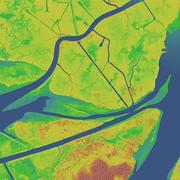
The 3DEP products and services available through The National Map consist of lidar point clouds (LPC), standard digital elevation models (DEMs) at various horizontal resolutions, elevation source and associated datasets, an elevation point query service and bulk point query service. All 3DEP products are available, free of charge and without use restrictions.
Science in the Great Lakes (SiGL) Mapper

The Science in the Great Lakes (SiGL) Mapper is a data-discovery tool that provides searchable access to detailed, project-specific information about what, where, when, and how GL data were collected and connects users with data repositories, publications, and contact information so they can easily access the project’s results.
Long Term Resource Monitoring

This web resource provides decision makers with the information needed to maintain the Upper Mississippi River System as a viable multiple-use large river ecosystem.
The USGS is working with partners to address nutrient pollution in the Mississippi Watershed. To learn more about this issue, and how the USGS is addressing nuterient monitoring and modeling, check out the StoryMap.
The Science in the Great Lakes (SiGL) Mapper is a data-discovery tool that provides searchable access to detailed, project-specific information about what, where, when, and how GL data were collected and connects users with data repositories, publications, and contact information so they can easily access the project’s results.
USGS topographic maps originally published on paper in the period 1884-2006 have been scanned and published as PDF documents. This collection is of topographic quadrangle maps with scales between 1:10,000 and 1:250,000. These historic documents are downloadable free of charge through several interfaces.
Groundwater science relevant to the Great Lakes Water Quality Agreement: A status report
When the Great Lakes Water Quality Agreement (GLWQA) was signed in 1972 by the Governments of Canada and the United States (the “Parties”) (Environment Canada, 2013a), groundwater was not recognized as important to the water quality of the Lakes. At that time, groundwater and surface water were still considered as two separate systems, with almost...
Grannemann, Norman G.; Van Stempvoort, DaleDepletion of florfenicol amine in tilapia (Oreochromis sp.) maintained in a recirculating aquaculture system following Aquaflor®-medicated feed therapy
Aquaflor® [50% w w−1 florfenicol (FFC)], is approved for use in freshwater-reared warmwater finfish which include tilapia Oreochromis spp. in the United States to control mortality from Streptococcus iniae. The depletion of florfenicol amine (FFA), the marker residue of FFC, was evaluated after feeding FFC-medicated feed to deliver a...
Gaikowski, Mark P.; Whitsel, Melissa K.; Charles, Shawn; Schleis, Susan M.; Crouch, Louis S.; Endris, Richard G.Estimation of suspended-sediment concentration from total suspended solids and turbidity data for Kentucky, 1978-1995
Suspended sediment is a constituent of water quality that is monitored because of concerns about accelerated erosion, nonpoint contamination of water resources, and degradation of aquatic environments. In order to quantify the relationship among different sediment parameters for Kentucky streams, long-term records were obtained from the National...
Williamson, Tanja N.; Crawford, Charles G.Simulated fate and transport of metolachlor in the unsaturated zone, Maryland, USA
An unsaturated-zone transport model was used to examine the transport and fate of metolachlor applied to an agricultural site in Maryland, USA. The study site was instrumented to collect data on soil-water content, soil-water potential, ground water levels, major ions, pesticides, and nutrients from the unsaturated zone during 2002-2004. The data...
Bayless, E.R.; Capel, P.D.; Barbash, J.E.; Webb, R.M.T.; Hancock, T.L.C.; Lampe, D.C.Occurrence, distribution, loads, and yields of selected pesticides in the Little River basin, Kentucky, 2003-04
Water resources in the Little River Basin are potentially vulnerable to applications of pesticides associated with both agricultural and nonagricultural activities, because much of the basin is characterized by karst topography. Concerns about water quality resulting from pesticide use in karst areas and lack of data on concentrations of...
Crain, Angela S.Areal distribution and concentrations of contaminants of concern in surficial streambed and lakebed sediments, Lake Erie-Lake Saint Clair Drainages, 1990-97
Concerns about elevated concentrations of contaminants such as polychlorinated biphenyls and mercury in aquatic bed sediments throughout the Great Lakes Basin have resulted in a need for better understanding of the scope and severity of the problem. Various organochlorine pesticides, polychlorinated biphenyls, trace metals, and polycyclic aromatic...
Rheaume, S.J.; Button, D.T.; Myers, Donna N.; Hubbell, D.L.Ground-water levels and flow directions in the glacial sediments and the Lockport Dolomite in southeastern Darke and northeastern Preble counties, Ohio, July 1998
During the summer of 1997, the U.S. Environmental Protection Agency (USEPA) began an emergency removal action at the Lewisburg Drum Site in northern Preble County, Ohio. The site is about 3 miles west-northwest of the village of Lewisburg. The USEPA removed about 1,200 drums of waste ink from the site, as well as 2,500 cubic yards of...
Dumouchelle, Denise H.This data exploration tool is intented for use by researchers, resource managers, and the public to better understand the status of the fish community in Lake Erie.
Phragmites, an invasive grass
Introduced Phragmites australis, also called the common reed, is an invasive grass in the Great Lakes.
Chelonid herpesvirus 5 replication
This microscopic image shows a sun-shaped area within turtle skin cells where chelonid herpesvirus 5 replicates. The virus capsids, or protein shells, are arrayed like a corona around the circle. ChHV5 is associated with fibropapillomatosisa tumor disease affecting endangered green turtles. (Credit: Thierry Work,
...MODIS Observes Snowpack in the Sierra Nevada Mountain Range
The Moderate Resolution Imaging Spectroradiometer (MODIS) sensor is located onboard NASA’s Terra and Aqua satellites. MODIS data are crucial tools for studying changes that have occurred on the surface of the Earth, including during times of drought. This video highlights Terra MODIS data over the Sierra Nevada Mountain Range and the changes in the amount of snowpack in
...Sea Lamprey Larvae in Electrofishing Basket
This image shows sea lamprey in their larvae phase.
Slower sea lamprey growth rates during the larval phase of development may increase the odds of sea lampreys becoming male, according to a USGS study. Sea lampreys are an invasive, parasitic species of fish damaging the Great Lakes.
...Groundwater use from the Ozark Plateaus aquifer system, 1900 to 2010
Groundwater use from the Ozark Plateaus aquifer system, 1900 to 2010” is a short video showing modeled groundwater withdrawal rates from the Ozark Plateaus aquifer system (Ozark system) in the central United States. The Ozark Plateaus Groundwater Availability Study aims to quantify current groundwater resources in the Ozark system, evaluate how these resources have changed
...Sea Lamprey Larvae in Hand
This image shows a sea lamprey in its larvae phase.
Slower sea lamprey growth rates during the larval phase of development may increase the odds of sea lampreys becoming male, according to a USGS study. Sea lampreys are an invasive, parasitic species of fish damaging the Great Lakes.
...Getting Started with MODIS Version 6 Therm. Anom. & Fire Data Part 1
This video focuses on the National Aeronautics and Space Administration’s (NASA) Terra and Aqua Moderate Resolution Imaging Spectroradiometer (MODIS) Version 6 Thermal Anomalies and Fire data distributed by NASA’s Land Processes Distributed Active Archive Center (LP DAAC). Information about the MODIS Version 6 Thermal Anomalies and Fire data products, changes between the
...Sea Lamprey Larvae on White Background
This image shows a sea lamprey in its larvae phase.
Slower sea lamprey growth rates during the larval phase of development may increase the odds of sea lampreys becoming male, according to a USGS study. Sea lampreys are an invasive, parasitic species of fish damaging the Great Lakes.
...Getting Started with MODIS Version 6 Therm. Anom. and Fire Data Part 2
This video focuses on the National Aeronautics and Space Administration’s (NASA) Terra and Aqua Moderate Resolution Imaging Spectroradiometer (MODIS) Version 6 Thermal Anomalies and Fire data distributed by NASA’s Land Processes Distributed Active Archive Center (LP DAAC). Information about the MODIS Version 6 Thermal Anomalies and Fire data products, the thematic fire
...Southeastern Bat with P. destructans Fungus
This southeastern bat (Myotis austroriparius) from Alabama shows signs of infection from the Pseudogymnoascus destructans fungus that causes white-nose syndrome in bats. The USGS National Wildlife Health Center later confirmed white-nose syndrome in this animal, marking the first time that WNS was found in a southeastern bat. As of June 2017, the species joins eight other
...Sea Lamprey Larvae in Hand 2
This image shows sea lampreys in their larvae phase.
Slower sea lamprey growth rates during the larval phase of development may increase the odds of sea lampreys becoming male, according to a USGS study. Sea lampreys are an invasive, parasitic species of fish damaging the Great Lakes.
...Getting Started with MODIS Version 6 Therm. Anom. & Fire Data Part 3
This video focuses on the National Aeronautics and Space Administration’s (NASA) Terra and Aqua Moderate Resolution Imaging Spectroradiometer (MODIS) Version 6 Thermal Anomalies and Fire data distributed by NASA’s Land Processes Distributed Active Archive Center (LP DAAC). Information about MODIS Thermal Anomalies and Fire quality information, including how to decode
...A new assessment of channel bed erosion near 13 highway bridges in the greater St. Louis, Missouri, area is now available in an online report from the U.S. Geological Survey, produced in cooperation with the Missouri Department of Transportation.
Both precipitation and groundwater withdrawals, among other factors, influence lake-water levels in the northeast Twin Cities metropolitan area, and the extent of these changes vary among lakes, according to a new U.S. Geological Survey study.
The public is invited to attend a free, family-friendly open house at a local U.S. Geological Survey center for ecology research on Saturday, September 9.
The public is invited to attend a free, family-friendly open house at a local U.S. Geological Survey center for ecology research on Saturday, September 16.
Invasive mussels and less nutrients from tributaries have altered the Lake Michigan ecosystem making it more conducive to the stocking of lake trout and steelhead than Chinook salmon, according to a recent U.S. Geological Survey and Michigan State University study.
One hundred small streams in the Midwest were tested for pesticides during the 2013 growing season and found to contain, on average, 52 pesticides per stream
The cold-loving fungus (Pseudogymnoascus destructans, or Pd) that causes white-nose syndrome, a disease that has killed millions of North American bats during hibernation, could also spread in summer months. Bats and humans visiting contaminated caves and mines can inadvertently contribute to the spread of the fungus, according to a recently published study by the U.S. Geological Survey.
U.S. Geological Survey field crews are measuring heavy flooding in the Columbus and Newark Ohio areas, as well as the northwest part of the state.
The USGS has up-to-date details on the July 6, 2017 event.
Adding milkweeds and other native flowering plants into midwestern agricultural lands is key to restoring monarch butterflies, with milkweed sowers from all sectors of society being critically needed for success.
Prairie dogs in the wild are less likely to succumb to plague after they ingest peanut-butter-flavored bait that contains a vaccine against the disease, according to a U.S. Geological Survey study published today in the journal EcoHealth.
Europe’s wild snakes could face a growing threat from a fungal skin disease that has contributed to wild snake deaths in North America, according to an international collaborative study, led by conservation charity Zoological Society of London alongside partners including the U.S. Geological Survey. The new study is published in the journal Scientific Reports.


